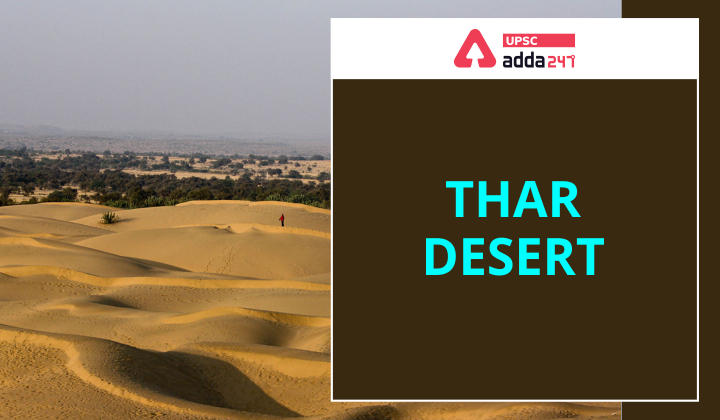Table of Contents
Thar desert- Relevance for UPSC Exam
- GS Paper 1: Physical Geography- Geographical features and their location.
Thar desert- Context
- Recently, in a major discovery, footprints of three species of dinosaurs have been found in the Thar desert in Rajasthan’s Jaisalmer district.
- The discovery proves the presence of the giant reptiles in the western part of the State (Thar Desert), which formed the seashore to the Tethys Ocean during the Mesozoic era.
- The footprints belong to three species of dinosaurs–
-
- Eubrontes cf. giganteus,
- Eubrontes glenrosensis and
- Grallator tenuis.
About Dinosaurs
- The dinosaur species are considered to be of the theropod type, with the distinguishing features of hollow bones and feet with three digits.
- All the three species found in the Thar Desert, belonging to the early Jurassic period, were carnivorous.
National Statistical Office (NSO)
Thar desert- Key Points
- Location of Thar Desert: located partly in India (in western Rajasthan) and partly in Pakistan (in Punjab and Sindh provinces).
- It derives its name from ‘thul’, (a general term for the region’s sand ridges).
- It forms a natural boundary along the border between India and Pakistan.
- Thar desert is bordered by
- Indus River plain to the west,
- Punjab Plain to the north and northeast,
- Aravalli Range to the southeast, and
- Rann of Kachchh to the south.
USA-India Defense Technology & Trade Initiative
Thar desert- Key Features
- Arid Region: it is also the Marusthali (dead land) as this region has an arid climate with low vegetation cover.
- The Eastern part of the Marushthali is rocky, while its western part is covered by shifting sand dunes.
- Soil: The surface of Thar Desert consists of aeolian (wind-deposited) sand that has accumulated over the past 1.8 million years.
- Climate of Thar Desert: It has subtropical desert climate (due to continuous high pressure and subsidence at that latitude).
- Saline Lakes: Several ‘Playas’ (saline lakes), also locally known as ‘dhands’, are scattered throughout the region.
- Species diversity- Flora and Fauna
- Flora: herbaceous plants like cactus, neem, khejri, acacia nilotica are found in the Thar region.
- Fauna: Leopard, the Asiatic wild cat, the chousingha, the chinkara, the Bengal desert fox, the Blackbuck, and several species of reptiles are commonly found in this region.




 TSPSC Group 1 Question Paper 2024, Downl...
TSPSC Group 1 Question Paper 2024, Downl...
 TSPSC Group 1 Answer key 2024 Out, Downl...
TSPSC Group 1 Answer key 2024 Out, Downl...
 UPSC Prelims 2024 Question Paper, Downlo...
UPSC Prelims 2024 Question Paper, Downlo...
